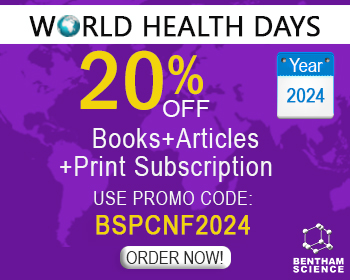Abstract
Background: Pre-exposure prophylaxis (PrEP) has recently been introduced in Mexico. Still, there are no data exploring the frequency and related factors of willingness to recommend it among non-physician health providers (Non-PHP).
Objective: Compare awareness, knowledge, attitudes, and willingness to recommend PrEP and combined HIV prevention among Mexican non-PHP.
Methods: We conducted an online survey assessing data on sociodemographics, awareness, knowledge, and willingness to recommend PrEP. We performed a descriptive and comparative analysis between those willing and unwilling to recommend PrEP.
Results: The final sample was 142 participants, and most were willing to recommend PrEP (79.6%). This group reported higher confidence in evaluating PrEP eligibility (90.1%, p<.01), identified that populations at increased risk of HIV would benefit the most from PrEP (p≤.05), and considered the lack of professionals to prescribe PrEP as a barrier (60.7%, p<.01), and were more likely to recommend post-exposure prophylaxis (95.6%, p<.01) compared to those not willing to recommend PrEP. On the other hand, more non-PHP unwilling to recommend PrEP considered that behavioral interventions should be prioritized over PrEP (89.3%, p<.05), PrEP should not be provided in public services (43.3%, p<.001), and the demand of PrEP users would be low to maintain PrEP as a public policy (34.5%, p<.05).
Conclusion: A high proportion of Mexican non-PHP is willing to recommend PrEP. Still, it is necessary to increase their PrEP knowledge, including improving their prejudices and beliefs, so they can identify and refer potential PrEP users based on their risk of getting HIV.
Keywords: Pre-exposure prophylaxis, attitudes, willingness, combination HIV prevention, non-physician healthcare providers, HIV.
[http://dx.doi.org/10.1016/j.jtbi.2017.12.018] [PMID: 29273545]
[http://dx.doi.org/10.1016/S1473-3099(14)70847-3] [PMID: 25065857]
[http://dx.doi.org/10.1126/scitranslmed.3004006] [PMID: 22972843]
[http://dx.doi.org/10.1056/NEJMoa1011205] [PMID: 21091279]
[http://dx.doi.org/10.1097/COH.0000000000000220] [PMID: 26633638]
[http://dx.doi.org/10.1089/apc.2019.0119] [PMID: 31821044]
[http://dx.doi.org/10.1177/2150132719878526] [PMID: 31578913]
[http://dx.doi.org/10.1097/QAI.0000000000001182] [PMID: 27654813]
[PMID: 27571497]
[http://dx.doi.org/10.1111/hiv.12285] [PMID: 26172217]
[http://dx.doi.org/10.2196/13771] [PMID: 31210143]
[http://dx.doi.org/10.1186/s12913-022-07900-y] [PMID: 35459177]
[http://dx.doi.org/10.1007/s10461-016-1625-1] [PMID: 27885552]
[http://dx.doi.org/10.1080/09540121.2017.1384534] [PMID: 28971705]
[http://dx.doi.org/10.1097/MJT.0000000000000773] [PMID: 29683840]
[http://dx.doi.org/10.1002/jia2.25559] [PMID: 32686324]
[http://dx.doi.org/10.1002/jia2.25466] [PMID: 32144888]
[http://dx.doi.org/10.1007/s10461-016-1612-6] [PMID: 27896552]
[http://dx.doi.org/10.1097/MD.0000000000028120] [PMID: 34889271]
[http://dx.doi.org/10.1089/apc.2017.0002] [PMID: 28414261]
[http://dx.doi.org/10.1002/jia2.25147] [PMID: 29939488]
[http://dx.doi.org/10.1016/S2352-3018(19)30333-9] [PMID: 31767536]
[http://dx.doi.org/10.1007/s10865-016-9714-1] [PMID: 26831053]
[http://dx.doi.org/10.1097/OLQ.0000000000000781] [PMID: 29465664]
[http://dx.doi.org/10.1007/s10461-014-0839-3] [PMID: 24965676]




























